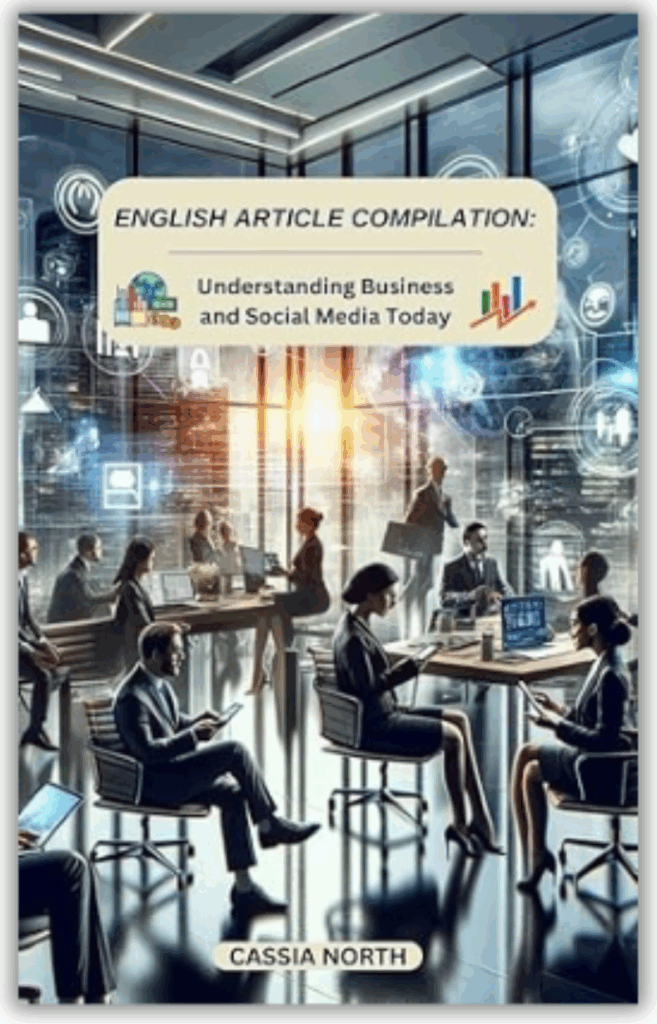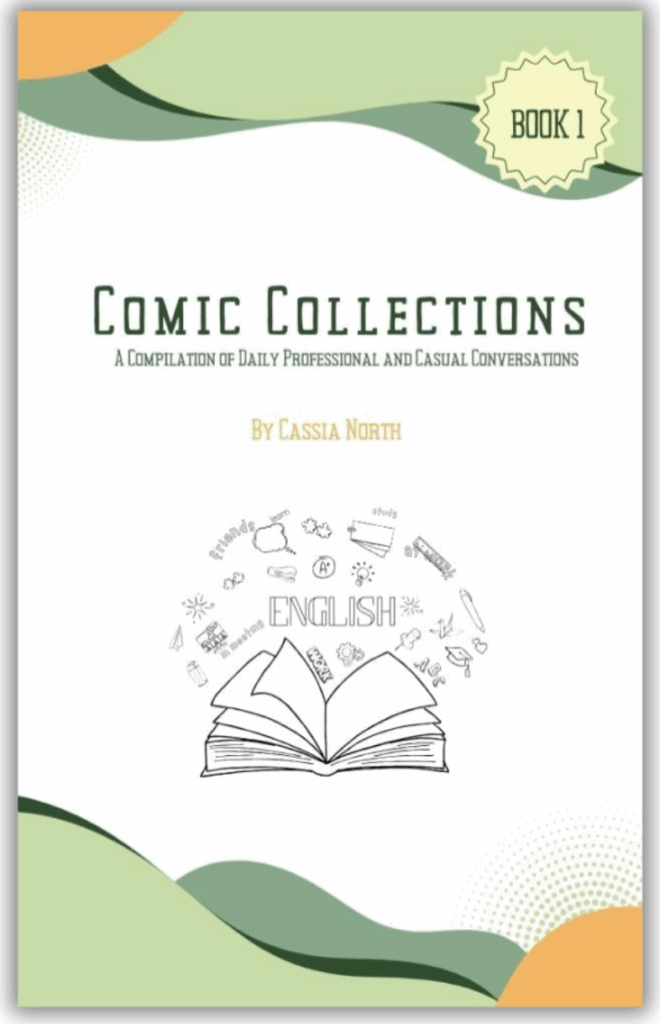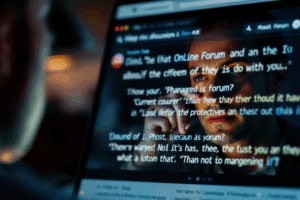
English Grammar for Business
"Let's Learn, Explore, and Connect to the World"

Additional Tips in Business Emails
- Jenelie Hijosa
- English Grammar for Business
Introduction

 In today’s digital-first business environment, emails have become the lifeline of professional communication, connecting colleagues, clients, and partners across the globe. In today’s professional world, writing strong business emails is no longer optional, it’s essential. Well-written emails ensure clear communication, foster professional relationships, and facilitate efficient business operations. Over previous discussions, we’ve laid a solid foundation by exploring key aspects of business email writing, including sentence structure & clarity, mechanics & punctuation, subject-verb agreement & tenses, and word choice & usage. These elements are essential for ensuring their recipients understand and take your emails seriously.
In today’s digital-first business environment, emails have become the lifeline of professional communication, connecting colleagues, clients, and partners across the globe. In today’s professional world, writing strong business emails is no longer optional, it’s essential. Well-written emails ensure clear communication, foster professional relationships, and facilitate efficient business operations. Over previous discussions, we’ve laid a solid foundation by exploring key aspects of business email writing, including sentence structure & clarity, mechanics & punctuation, subject-verb agreement & tenses, and word choice & usage. These elements are essential for ensuring their recipients understand and take your emails seriously.
 However, mastering business emails goes beyond these fundamental components. It requires understanding more nuanced aspects of communication, such as the email’s tone, structure, and etiquette surrounding email interactions. These additional tips focus on advanced strategies and etiquette that can significantly enhance the effectiveness of your email communication. From crafting concise and compelling messages to understanding the importance of cultural sensitivity, these strategies are designed to refine your email writing skills further.
However, mastering business emails goes beyond these fundamental components. It requires understanding more nuanced aspects of communication, such as the email’s tone, structure, and etiquette surrounding email interactions. These additional tips focus on advanced strategies and etiquette that can significantly enhance the effectiveness of your email communication. From crafting concise and compelling messages to understanding the importance of cultural sensitivity, these strategies are designed to refine your email writing skills further.
These are complex topics, but let’s keep it clear and to the point. We want to be respectful of everyone’s time and build good working relationships while we learn. By applying these additional tips, you’ll be better equipped to navigate the complexities of business communication, ensuring your emails not only reach the inbox but also resonate with the reader. Let’s embark on this journey to elevate your business email prowess, ensuring your messages stand out in a crowded inbox for all the right reasons.
The Art of Precision and Brevity
 In the realm of business emails, the ability to communicate with precision and brevity is invaluable. This approach not only respects the recipient’s time but also ensures your message is understood with minimal effort. It can be challenging to write emails that are both short and clear, but that’s the key to getting your message across effectively.
In the realm of business emails, the ability to communicate with precision and brevity is invaluable. This approach not only respects the recipient’s time but also ensures your message is understood with minimal effort. It can be challenging to write emails that are both short and clear, but that’s the key to getting your message across effectively.
Importance of Being Concise Without Sacrificing Clarity
 Conciseness in email communication is about delivering your message in the fewest possible words without omitting essential information. This efficiency allows the recipient to quickly grasp your message’s essence, enhancing the likelihood of a prompt and appropriate response. However, brevity should not come at the expense of clarity. Every sentence should serve a purpose, whether it’s to convey a key point, provide necessary details, or prompt action. The goal is to eliminate unnecessary words while ensuring your message remains clear and your intent unambiguous.
Conciseness in email communication is about delivering your message in the fewest possible words without omitting essential information. This efficiency allows the recipient to quickly grasp your message’s essence, enhancing the likelihood of a prompt and appropriate response. However, brevity should not come at the expense of clarity. Every sentence should serve a purpose, whether it’s to convey a key point, provide necessary details, or prompt action. The goal is to eliminate unnecessary words while ensuring your message remains clear and your intent unambiguous.
Techniques to Eliminate Redundancy and Fluff
 Eliminating redundancy and fluff is crucial for writing concise emails. Redundancy occurs when the same information is repeated unnecessarily, while fluff consists of words, phrases, or sentences that do not add value to the message. To combat these issues, start by scrutinizing each sentence for unnecessary repetitions and superfluous information. Phrases like “I am writing to inform you” can often be removed, as the act of sending the email already implies this. Active voice gets straight to the point and uses fewer words, making your writing clear and easy to read. For instance, “The meeting was scheduled by the team” can be more succinctly expressed as “The team scheduled the meeting.”
Eliminating redundancy and fluff is crucial for writing concise emails. Redundancy occurs when the same information is repeated unnecessarily, while fluff consists of words, phrases, or sentences that do not add value to the message. To combat these issues, start by scrutinizing each sentence for unnecessary repetitions and superfluous information. Phrases like “I am writing to inform you” can often be removed, as the act of sending the email already implies this. Active voice gets straight to the point and uses fewer words, making your writing clear and easy to read. For instance, “The meeting was scheduled by the team” can be more succinctly expressed as “The team scheduled the meeting.”
Another effective technique is to avoid over-elaboration. Provide enough detail to convey your message clearly but resist the urge to include irrelevant information. This approach helps in maintaining focus and ensures that the key points stand out.
Using Bullet Points and Numbered Lists for Clarity
 The bullet points and numbered lists are excellent tools for enhancing clarity and conciseness in emails. They allow you to present information in an organized manner, making it easier for the recipient to scan and understand key points quickly. When listing items, actions, or key points, bullet points can highlight each element distinctly, drawing attention to important details without getting lost in lengthy paragraphs.
The bullet points and numbered lists are excellent tools for enhancing clarity and conciseness in emails. They allow you to present information in an organized manner, making it easier for the recipient to scan and understand key points quickly. When listing items, actions, or key points, bullet points can highlight each element distinctly, drawing attention to important details without getting lost in lengthy paragraphs.
 Numbered lists are particularly useful when outlining steps, instructions, or reasons. They provide a clear structure that guides the reader through your content sequentially, ensuring that complex information is digestible and actionable. Additionally, using lists can break up large blocks of text, making your email more visually appealing and less daunting to read.
Numbered lists are particularly useful when outlining steps, instructions, or reasons. They provide a clear structure that guides the reader through your content sequentially, ensuring that complex information is digestible and actionable. Additionally, using lists can break up large blocks of text, making your email more visually appealing and less daunting to read.
The art of precision and brevity in business emails is a skill that develops over time and with practice. By focusing on being concise without sacrificing clarity, employing techniques to eliminate redundancy, and effectively using bullet points and numbered lists, you can craft emails that communicate your message effectively and efficiently. This approach not only enhances the readability of your emails but also demonstrates respect for your recipient’s time, contributing to more productive and positive professional relationships.
Tone and Politeness
 The way you write your business emails can make a big difference in how your message is understood and whether you achieve your goal. It’s the subtleties in language that can convey respect, establish rapport, and demonstrate professionalism. Similarly, politeness is not just a matter of etiquette; it’s essential for fostering positive relationships and ensuring your emails are received in the best possible light. This section explores how to adjust the tone to suit the purpose of your email and the recipient, strategies for ensuring politeness and respect, and the importance of cultural sensitivity.
The way you write your business emails can make a big difference in how your message is understood and whether you achieve your goal. It’s the subtleties in language that can convey respect, establish rapport, and demonstrate professionalism. Similarly, politeness is not just a matter of etiquette; it’s essential for fostering positive relationships and ensuring your emails are received in the best possible light. This section explores how to adjust the tone to suit the purpose of your email and the recipient, strategies for ensuring politeness and respect, and the importance of cultural sensitivity.
Adjusting the Tone to Suit the Email's Purpose and Recipient
 The tone of your email should be tailored to both its purpose and the recipient. A message to a long-time colleague can afford to be more casual and warm, whereas an email to a new client or senior executive should be more formal and reserved. Identifying the purpose of your email is the first step—whether it’s to inform, request, apologize, or persuade. This purpose should guide your tone, ensuring it’s appropriate and effective. For instance, a persuasive email might adopt a confident yet respectful tone, while an informational email would be straightforward and professional.
The tone of your email should be tailored to both its purpose and the recipient. A message to a long-time colleague can afford to be more casual and warm, whereas an email to a new client or senior executive should be more formal and reserved. Identifying the purpose of your email is the first step—whether it’s to inform, request, apologize, or persuade. This purpose should guide your tone, ensuring it’s appropriate and effective. For instance, a persuasive email might adopt a confident yet respectful tone, while an informational email would be straightforward and professional.
Strategies for Ensuring Politeness and Respect
 Politeness in emails is conveyed through word choice, sentence structure, and overall language use. Taking a moment to be polite with “please” and “thank you” demonstrates respect and appreciation for the recipient’s time and attention. This small gesture can significantly improve the overall tone of your email. Similarly, acknowledging the recipient’s time and effort, such as starting with “Thank you for your prompt response” or “I appreciate the time you’ve taken,” sets a respectful and considerate tone.
Politeness in emails is conveyed through word choice, sentence structure, and overall language use. Taking a moment to be polite with “please” and “thank you” demonstrates respect and appreciation for the recipient’s time and attention. This small gesture can significantly improve the overall tone of your email. Similarly, acknowledging the recipient’s time and effort, such as starting with “Thank you for your prompt response” or “I appreciate the time you’ve taken,” sets a respectful and considerate tone.
Avoiding imperatives can also make requests sound more polite. Instead of “Send me the report by Monday,” consider “Could you please send me the report by Monday?” This minor adjustment can significantly impact the email’s tone, making it sound less like a demand and more like a respectful request.
The Role of Cultural Sensitivity in Business Emails
 Cultural sensitivity is crucial in international business communications. Different cultures have varying norms and expectations regarding formality, directness, and etiquette. For example, some cultures value a highly formal approach with titles and surnames, while others may prefer first-name basis interactions even in professional settings. Researching and understanding these cultural nuances can prevent misunderstandings and foster more effective communication. Additionally, being mindful of holidays, work hours, and significant cultural events in the recipient’s country can further demonstrate respect and cultural awareness.
Cultural sensitivity is crucial in international business communications. Different cultures have varying norms and expectations regarding formality, directness, and etiquette. For example, some cultures value a highly formal approach with titles and surnames, while others may prefer first-name basis interactions even in professional settings. Researching and understanding these cultural nuances can prevent misunderstandings and foster more effective communication. Additionally, being mindful of holidays, work hours, and significant cultural events in the recipient’s country can further demonstrate respect and cultural awareness.
In summary, the tone and politeness of your business emails are fundamental to successful communication. By adjusting your tone, employing strategies to ensure politeness, and being culturally sensitive, you can build positive relationships, avoid misunderstandings, and convey your messages more effectively.
Email Structure and Organization
 The structure and organization of your business emails are just as critical as the content itself. Proper organization ensures your message is easily digestible, clearly understood, and actionable. This section delves into advanced formatting tips for enhancing readability, effective structuring for easy navigation, and the pivotal role of a compelling opening and a clear call-to-action (CTA) in your emails.
The structure and organization of your business emails are just as critical as the content itself. Proper organization ensures your message is easily digestible, clearly understood, and actionable. This section delves into advanced formatting tips for enhancing readability, effective structuring for easy navigation, and the pivotal role of a compelling opening and a clear call-to-action (CTA) in your emails.
Advanced Formatting Tips for Readability
 Readability is paramount in business emails, where time is often at a premium. Break up your emails with clear headings and subheadings to make them easier to read and find important information. Bold or italicize keywords or phrases to emphasize crucial information without overwhelming the reader. However, use these sparingly to maintain their impact. Short paragraphs and white space are your allies; they prevent your email from appearing as an intimidating text block, making it more approachable and easier to scan.
Readability is paramount in business emails, where time is often at a premium. Break up your emails with clear headings and subheadings to make them easier to read and find important information. Bold or italicize keywords or phrases to emphasize crucial information without overwhelming the reader. However, use these sparingly to maintain their impact. Short paragraphs and white space are your allies; they prevent your email from appearing as an intimidating text block, making it more approachable and easier to scan.
Structuring Content for Easy Navigation
 The structure of your email should guide the reader through your message in a coherent and logical manner. Begin with a clear introduction that sets the context and purpose of the email. This could be a brief summary of the situation, a reference to a previous communication, or an introduction to the topic at hand.
The structure of your email should guide the reader through your message in a coherent and logical manner. Begin with a clear introduction that sets the context and purpose of the email. This could be a brief summary of the situation, a reference to a previous communication, or an introduction to the topic at hand.
Follow this with the body of your email, where the bulk of your information or request is detailed. If you’re covering multiple points, consider listing them using bullet points, or you can use numbered lists to break the information down into manageable parts. This not only aids in readability but also helps in ensuring that none of your points are overlooked.
End with a conclusion that succinctly wraps up your email, reiterating any important actions needed or summarizing the key points discussed. This reinforces your message and ensures clarity.
The Importance of a Compelling Opening and a Clear Call-to-Action (CTA)
 Your email’s opening should grab the recipient’s attention and encourage them to read on. It should be relevant, engaging, and convey the value of your message. The opening lines set the tone for the rest of the email, so make them count.
Your email’s opening should grab the recipient’s attention and encourage them to read on. It should be relevant, engaging, and convey the value of your message. The opening lines set the tone for the rest of the email, so make them count.
Equally important is your closing, which should include a clear call-to-action (CTA). Be explicit about what you want the recipient to do next—whether it’s to reply with specific information, complete a task, or confirm their attendance at a meeting. A clear CTA removes any ambiguity about the expected response, increasing the likelihood of the desired action being taken.
Mastering the art of email structure and organization not only enhances the readability of your messages but also ensures they are effective and action-oriented. By paying attention to formatting, structuring your content for easy navigation, and crafting compelling openings and clear CTAs, your emails will stand out for their clarity and persuasiveness, making every word count.
Don't underestimate the power of your subject line
 The subject line is your chance to grab the reader’s attention and get them to open your email. A good one can mean the difference between getting read right away or lost in their inbox. An effective subject line serves as a headline, succinctly conveying the essence of your message while enticing the recipient to read further. This section explores the art of crafting informative and attention-grabbing subject lines, common pitfalls to avoid, and strategies for using the subject line to signify the importance of your email.
The subject line is your chance to grab the reader’s attention and get them to open your email. A good one can mean the difference between getting read right away or lost in their inbox. An effective subject line serves as a headline, succinctly conveying the essence of your message while enticing the recipient to read further. This section explores the art of crafting informative and attention-grabbing subject lines, common pitfalls to avoid, and strategies for using the subject line to signify the importance of your email.
Crafting Informative and Attention-Grabbing Subject Lines
 A compelling subject line strikes a balance between being informative and engaging. It should give the recipient a clear idea of what the email is about while sparking curiosity or highlighting urgency. For instance, instead of a generic “Meeting Update,” a more effective subject line could be “New Meeting Date: Action Required by Friday.” This not only informs the recipient of a meeting update but also signals that their input or action is needed, adding a sense of urgency.
A compelling subject line strikes a balance between being informative and engaging. It should give the recipient a clear idea of what the email is about while sparking curiosity or highlighting urgency. For instance, instead of a generic “Meeting Update,” a more effective subject line could be “New Meeting Date: Action Required by Friday.” This not only informs the recipient of a meeting update but also signals that their input or action is needed, adding a sense of urgency.
Personalization can also enhance the impact of your subject line. Including the recipient’s name or a reference to a recent interaction can make the email feel more tailored and relevant, increasing the chances of it being opened.
Common Mistakes to Avoid
 One common mistake is leaving the subject line vague or, worse, empty. This can lead to your email being overlooked or marked as spam. Overusing caps lock or exclamation points can also work against you, making your email appear unprofessional or even aggressive. Additionally, misleading subject lines that don’t match the email’s content can frustrate recipients and damage trust.
One common mistake is leaving the subject line vague or, worse, empty. This can lead to your email being overlooked or marked as spam. Overusing caps lock or exclamation points can also work against you, making your email appear unprofessional or even aggressive. Additionally, misleading subject lines that don’t match the email’s content can frustrate recipients and damage trust.
Another pitfall is making the subject line too long. With many people checking emails on mobile devices, lengthy subject lines can get cut off, losing their effectiveness. Aim for brevity, with a sweet spot of 6 to 10 words being ideal for most email clients.
Using the Subject Line to Prioritize the Email's Importance
 The subject line can also indicate the priority or urgency of your email. Phrases like “Immediate Action Required,” “For Your Review,” or “Deadline Extended” clearly communicate the importance of the email and the type of response needed. However, use these cues judiciously to avoid diluting their impact over time.
The subject line can also indicate the priority or urgency of your email. Phrases like “Immediate Action Required,” “For Your Review,” or “Deadline Extended” clearly communicate the importance of the email and the type of response needed. However, use these cues judiciously to avoid diluting their impact over time.
For non-urgent emails that still require attention, indicating a timeframe can be helpful, such as “Please Review by Next Week.” This helps the recipient prioritize their response without feeling undue pressure.
The subject line is a crucial element of effective email communication, serving as the gateway to your message. By crafting subject lines that are both informative and engaging, avoiding common mistakes, and using them to indicate urgency appropriately, you can significantly increase the visibility and impact of your emails.
Follow-Up Emails and Email Chains
 Navigating follow-up emails and managing long email threads are vital skills in professional communication. The way you write follow-up emails, whether for a request, meeting, or anything else, can make a big difference in how well they work. Similarly, maintaining clarity and courtesy in long email threads or when altering the recipient list is crucial for smooth, professional interactions. This section will delve into the best practices for follow-up emails, strategies for managing lengthy email threads, and the etiquette of modifying the recipient list.
Navigating follow-up emails and managing long email threads are vital skills in professional communication. The way you write follow-up emails, whether for a request, meeting, or anything else, can make a big difference in how well they work. Similarly, maintaining clarity and courtesy in long email threads or when altering the recipient list is crucial for smooth, professional interactions. This section will delve into the best practices for follow-up emails, strategies for managing lengthy email threads, and the etiquette of modifying the recipient list.
Best Practices for Follow-Up Emails
 Follow-up emails are essential for keeping projects on track and ensuring your initial message doesn’t go unnoticed. When crafting a follow-up, start by providing context. A brief mention of your previous email and its date can help jog the recipient’s memory. Be polite yet assertive, clearly stating the action you’re seeking without implying negligence. For example, “I wanted to follow up on my email from last Thursday about the quarterly report. Could you please let me know the status of your review?”
Follow-up emails are essential for keeping projects on track and ensuring your initial message doesn’t go unnoticed. When crafting a follow-up, start by providing context. A brief mention of your previous email and its date can help jog the recipient’s memory. Be polite yet assertive, clearly stating the action you’re seeking without implying negligence. For example, “I wanted to follow up on my email from last Thursday about the quarterly report. Could you please let me know the status of your review?”
Timing is also crucial; allow enough time between your initial email and the follow-up to give the recipient a chance to respond, typically a few days to a week, depending on the urgency.
Managing Long Email Threads Effectively
 Long email threads can become confusing, especially when the subject veers off from the original topic. To keep the conversation clear, consider starting a new thread with a summarized update or conclusion of the previous discussion when shifting to a new but related topic. This keeps the email focused and accessible to those who might have been added to the conversation later.
Long email threads can become confusing, especially when the subject veers off from the original topic. To keep the conversation clear, consider starting a new thread with a summarized update or conclusion of the previous discussion when shifting to a new but related topic. This keeps the email focused and accessible to those who might have been added to the conversation later.
Ensure the subject line remains relevant to the thread’s current focus. If the discussion’s direction changes significantly, update the subject line accordingly to reflect the new focus.
Etiquette for Adding or Removing Recipients in Ongoing Conversations
 When adding someone to an ongoing email thread, it’s polite to introduce the new recipient at the beginning of your email, explaining why they’ve been added. This not only informs the original recipients but also helps the new add-on to understand the context. For example, “I’ve added John Doe to this conversation as he will be leading the project moving forward.”
When adding someone to an ongoing email thread, it’s polite to introduce the new recipient at the beginning of your email, explaining why they’ve been added. This not only informs the original recipients but also helps the new add-on to understand the context. For example, “I’ve added John Doe to this conversation as he will be leading the project moving forward.”
Similarly, if removing someone from an email chain, consider sending them a brief note explaining why they’re being removed, ensuring they don’t feel abruptly cut off. This can often be done in a separate email to maintain their privacy.
By adhering to these best practices for follow-up emails, effectively managing long email threads, and observing proper etiquette when changing the recipient list, you can maintain professionalism, ensure clarity, and foster positive working relationships in your email communications.
Conclusion
 Mastering the art of business email communication is an ongoing journey that extends far beyond understanding the basics of grammar and punctuation. As we have explored in this article, numerous nuances and advanced strategies can significantly enhance your email’s effectiveness. From the art of precision and brevity, ensuring your messages are concise yet clear, to the delicate balance of tone and politeness, which can greatly influence how your messages are received. We’ve delved into the importance of a well-structured email, the critical role of a compelling subject line, and the best practices for managing follow-ups and email threads.
Mastering the art of business email communication is an ongoing journey that extends far beyond understanding the basics of grammar and punctuation. As we have explored in this article, numerous nuances and advanced strategies can significantly enhance your email’s effectiveness. From the art of precision and brevity, ensuring your messages are concise yet clear, to the delicate balance of tone and politeness, which can greatly influence how your messages are received. We’ve delved into the importance of a well-structured email, the critical role of a compelling subject line, and the best practices for managing follow-ups and email threads.
These additional tips are designed to refine your email communication skills further, ensuring that every email you send is impactful, respectful, and purposeful. The importance of continuous improvement in this area cannot be overstated; as our professional environment evolves, so too must our approach to communication.
 We encourage you to not only apply these strategies to your own email practices but also to share your experiences. Whether you’ve found success with a particularly compelling subject line, navigated a complex email thread with ease, or discovered a new approach to follow-up emails, your insights can benefit others. By sharing our experiences, we contribute to a community of professionals who value effective communication as a cornerstone of success.
We encourage you to not only apply these strategies to your own email practices but also to share your experiences. Whether you’ve found success with a particularly compelling subject line, navigated a complex email thread with ease, or discovered a new approach to follow-up emails, your insights can benefit others. By sharing our experiences, we contribute to a community of professionals who value effective communication as a cornerstone of success.
As you move forward, remember that each email is an opportunity to practice and perfect these skills. With every message sent, you are building stronger connections, enhancing your professional image, and paving the way for successful outcomes.
References
- What Is Readability and Why Should It Matter to Social Workers? – SocialWorker.com. https://www.socialworker.com/feature-articles/practice/what-is-readability-and-why-should-it-matter-to-social-workers/
- Nurturing Leads with Effective Email Campaigns. https://hub.bloomclicks.com/from-subscriber-to-customer-nurturing-leads-with-effective-email-campaigns/
- ‘5 Tips for A Successful Email Marketing Campaign’ – MCM. https://mcm.click/5-tips-for-a-successful-email-marketing-campaign/
Latest Blogs

Seasonal Affective Disorder (SAD): Symptoms, Causes, and Treatments
Mental and Emotional Health “Let’s Learn, Explore, and Connect to the World” Seasonal Affective Disorder (SAD): Symptoms, Causes, and Treatments Introduction As the sun sets

Past Continuous 4
English Blogs “Let’s Learn, Explore, and Connect to the World” Past Continuous 4 IV. Forming Questions and Negatives in the Past Continuous The ability to
Reading comprehension quiz
Check out our books and more!

Travel English: A Compilation of Key English Conversations When Traveling
Explore the world confidently with ‘Travel English’ by Allison Kate, a comic-style guide full of essential conversations and tips for every traveler. Speak English with ease in airports, hotels, and more!
Check out our Blogs!
Read our everyday blogs and gain new knowledge, skills, and inspiration to support your learning journey here in SEKAEL.


Explore English Blogs to improve your speaking, listening, reading, and writing skills in real-life situations.







 In the digital age, advertising has transcended traditional boundaries, evolving into a dynamic force that drives consumer behavior and business growth. Among the myriad of digital marketing strategies, targeted advertising stands out as a cornerstone, enabling businesses to deliver their messages to the right audience at the right time. This precision not only enhances the effectiveness of campaigns but also maximizes return on investment by minimizing the wastage of resources on uninterested parties.
In the digital age, advertising has transcended traditional boundaries, evolving into a dynamic force that drives consumer behavior and business growth. Among the myriad of digital marketing strategies, targeted advertising stands out as a cornerstone, enabling businesses to deliver their messages to the right audience at the right time. This precision not only enhances the effectiveness of campaigns but also maximizes return on investment by minimizing the wastage of resources on uninterested parties. With billions of users and robust data analysis, Facebook reigns supreme in online advertising. It provides marketers with an unmatched reach across various demographics, making it crucial for targeting specific audiences. Facebook’s advanced ad tools allow for precise targeting based on factors like age, interests, and online behavior, guaranteeing that ads reach the most relevant viewers.
With billions of users and robust data analysis, Facebook reigns supreme in online advertising. It provides marketers with an unmatched reach across various demographics, making it crucial for targeting specific audiences. Facebook’s advanced ad tools allow for precise targeting based on factors like age, interests, and online behavior, guaranteeing that ads reach the most relevant viewers. Facebook Ads represent one of the most powerful tools in the digital marketer’s arsenal. They leverage Facebook’s extensive user network to deliver tailored advertisements directly to a selected audience. This system operates within the Facebook platform, including Instagram and Messenger, allowing advertisers to place their messages in front of users not just based on traditional ad spaces but also integrated naturally into their social feeds.
Facebook Ads represent one of the most powerful tools in the digital marketer’s arsenal. They leverage Facebook’s extensive user network to deliver tailored advertisements directly to a selected audience. This system operates within the Facebook platform, including Instagram and Messenger, allowing advertisers to place their messages in front of users not just based on traditional ad spaces but also integrated naturally into their social feeds.
 Facebook ads go far and wide, reaching nearly everyone on the planet. Powerful targeting tools pinpoint the right audience using all sorts of info – age, location, what they’re into, and even how they use Facebook. Plus, Facebook’s innovative system prioritizes showing your ads to people most likely to care, so you get the biggest bang for your buck.
Facebook ads go far and wide, reaching nearly everyone on the planet. Powerful targeting tools pinpoint the right audience using all sorts of info – age, location, what they’re into, and even how they use Facebook. Plus, Facebook’s innovative system prioritizes showing your ads to people most likely to care, so you get the biggest bang for your buck. Facebook goes beyond just showing your ads to a lot of people—it helps you see how well they’re working, too. With its analytics tools, you can track your campaigns in real time, see who sees your ads, and even measure whether people are taking the actions you want. This lets you constantly improve your marketing strategy to get the best results.
Facebook goes beyond just showing your ads to a lot of people—it helps you see how well they’re working, too. With its analytics tools, you can track your campaigns in real time, see who sees your ads, and even measure whether people are taking the actions you want. This lets you constantly improve your marketing strategy to get the best results. In the digital marketing world, the scattergun approach of traditional advertising is being swiftly replaced by targeted advertising. This strategy is essential not only for maximizing the effectiveness of advertising campaigns but also for enhancing user experience by aligning content with user preferences and needs.
In the digital marketing world, the scattergun approach of traditional advertising is being swiftly replaced by targeted advertising. This strategy is essential not only for maximizing the effectiveness of advertising campaigns but also for enhancing user experience by aligning content with user preferences and needs. Through Facebook ads, marketers can achieve a high degree of granularity in their advertising efforts, making them an essential element of modern digital marketing strategies. Whether the goal is to increase brand recognition, boost website traffic, or drive sales, Facebook’s sophisticated targeting capabilities make it possible to achieve these objectives with remarkable efficiency and effectiveness.
Through Facebook ads, marketers can achieve a high degree of granularity in their advertising efforts, making them an essential element of modern digital marketing strategies. Whether the goal is to increase brand recognition, boost website traffic, or drive sales, Facebook’s sophisticated targeting capabilities make it possible to achieve these objectives with remarkable efficiency and effectiveness. Demographic targeting involves segmenting the market based on attributes such as age, gender, location, marital status, education level, and more. Facebook, with its vast database, offers advertisers the ability to zero in on these demographics with precision, crafting messages that resonate with each group’s unique preferences and lifestyles.
Demographic targeting involves segmenting the market based on attributes such as age, gender, location, marital status, education level, and more. Facebook, with its vast database, offers advertisers the ability to zero in on these demographics with precision, crafting messages that resonate with each group’s unique preferences and lifestyles. Age:
Age:  Location: Geo-targeting allows ads to be shown to users based on specific locations, from broad regions to particular cities or even neighborhoods. This is particularly useful for local businesses that want to attract nearby customers, such as restaurants or retail stores. A local gym might target ads to Facebook users within a 10-mile radius to drive local sign-ups.
Location: Geo-targeting allows ads to be shown to users based on specific locations, from broad regions to particular cities or even neighborhoods. This is particularly useful for local businesses that want to attract nearby customers, such as restaurants or retail stores. A local gym might target ads to Facebook users within a 10-mile radius to drive local sign-ups. Gender: Products or services often appeal more to one gender than another. For instance, a brand that sells women’s athletic wear will target female Facebook users to increase the relevance and effectiveness of their advertising.
Gender: Products or services often appeal more to one gender than another. For instance, a brand that sells women’s athletic wear will target female Facebook users to increase the relevance and effectiveness of their advertising. Marital Status: This can be a crucial factor in marketing products related to relationship stages, such as wedding services targeting engaged users or baby products aimed at newly married couples.
Marital Status: This can be a crucial factor in marketing products related to relationship stages, such as wedding services targeting engaged users or baby products aimed at newly married couples. Education Level: Targeting based on education can help tailor the messaging and product offerings based on the audience’s educational background. For example, educational software for advanced learning can be targeted at users who have indicated a higher education level.
Education Level: Targeting based on education can help tailor the messaging and product offerings based on the audience’s educational background. For example, educational software for advanced learning can be targeted at users who have indicated a higher education level.
 However, demographic targeting does have its limitations. Relying solely on demographic data might lead to assumptions that overlook the diversity within each group. Users within the same demographic can have vastly different interests and behaviors, which means advertisers might miss potential customers who fall outside their targeted demographics but may still be interested in the product.
However, demographic targeting does have its limitations. Relying solely on demographic data might lead to assumptions that overlook the diversity within each group. Users within the same demographic can have vastly different interests and behaviors, which means advertisers might miss potential customers who fall outside their targeted demographics but may still be interested in the product. Interest-based targeting is a powerful method that Facebook offers to help advertisers reach users based on their hobbies, likes, and activities on the platform. This approach goes beyond demographic factors, diving deeper into the audience’s psyche and preferences, allowing for more personalized and relevant advertising.
Interest-based targeting is a powerful method that Facebook offers to help advertisers reach users based on their hobbies, likes, and activities on the platform. This approach goes beyond demographic factors, diving deeper into the audience’s psyche and preferences, allowing for more personalized and relevant advertising.


 Information on past purchases, both on and off Facebook, gives advertisers clues about what products users might be interested in buying again.
Information on past purchases, both on and off Facebook, gives advertisers clues about what products users might be interested in buying again. Data on whether users access Facebook from mobile devices, desktops, or tablets, helping tailor ads to the device most commonly used.
Data on whether users access Facebook from mobile devices, desktops, or tablets, helping tailor ads to the device most commonly used. Tracks indications of recent travels or regular commuting, useful for local businesses or travel-related services.
Tracks indications of recent travels or regular commuting, useful for local businesses or travel-related services. Insights into which types of posts and ads users have interacted with in the past, including likes, shares, and comments.
Insights into which types of posts and ads users have interacted with in the past, including likes, shares, and comments. Data collected from websites and apps connected with Facebook, through tools like Facebook Pixel and SDK, which track user interactions outside of Facebook itself.
Data collected from websites and apps connected with Facebook, through tools like Facebook Pixel and SDK, which track user interactions outside of Facebook itself.
 The balance between broad and narrow targeting is crucial. Too broad, and you risk diluting your message across an audience that may not be interested; too narrow, and you may miss potential customers who could convert if given the chance. The goal is to find a sweet spot where the targeting is specific enough to be relevant yet not so exclusive that it omits potential leads. This balance maximizes both reach and relevance, ensuring optimal use of your advertising budget.
The balance between broad and narrow targeting is crucial. Too broad, and you risk diluting your message across an audience that may not be interested; too narrow, and you may miss potential customers who could convert if given the chance. The goal is to find a sweet spot where the targeting is specific enough to be relevant yet not so exclusive that it omits potential leads. This balance maximizes both reach and relevance, ensuring optimal use of your advertising budget.
 The integration of these targeting strategies enables marketers to craft campaigns that are not just seen but are also relevant and compelling to the audience they reach. This relevance is key to driving higher engagement rates, increasing conversions, and ultimately maximizing the return on investment in advertising spend.
The integration of these targeting strategies enables marketers to craft campaigns that are not just seen but are also relevant and compelling to the audience they reach. This relevance is key to driving higher engagement rates, increasing conversions, and ultimately maximizing the return on investment in advertising spend.








 In the modern era, mental health issues have escalated into a significant global challenge, impacting countless individuals worldwide. Anxiety, depression, and stress-related disorders are increasingly prevalent, prompting a search for effective treatments beyond traditional medication and psychotherapy. One promising area of exploration is the impact of physical exercise on mental well-being.
In the modern era, mental health issues have escalated into a significant global challenge, impacting countless individuals worldwide. Anxiety, depression, and stress-related disorders are increasingly prevalent, prompting a search for effective treatments beyond traditional medication and psychotherapy. One promising area of exploration is the impact of physical exercise on mental well-being. This blog post delves into the scientific underpinnings of exercise’s impact on mental health, exploring how it can be a powerful tool not only for treatment but also for prevention of mental health problems. By examining both the biological and psychological mechanisms at play, we aim to shed light on why incorporating exercise into daily routines can be a transformative strategy for enhancing mental well-being.
This blog post delves into the scientific underpinnings of exercise’s impact on mental health, exploring how it can be a powerful tool not only for treatment but also for prevention of mental health problems. By examining both the biological and psychological mechanisms at play, we aim to shed light on why incorporating exercise into daily routines can be a transformative strategy for enhancing mental well-being. Mental health involves our emotional, psychological, and social well-being, influencing our everyday thoughts, feelings, and behaviors. It is vital in how we handle stress, relate to others, and make decisions. Essential to our existence, mental health is crucial for sustaining a high-quality life.
Mental health involves our emotional, psychological, and social well-being, influencing our everyday thoughts, feelings, and behaviors. It is vital in how we handle stress, relate to others, and make decisions. Essential to our existence, mental health is crucial for sustaining a high-quality life.








 While the therapeutic benefits of exercise for existing mental health conditions are well documented, its role in preventing the onset of such disorders is equally significant. Regular physical activity can serve as a proactive measure in maintaining mental health and preventing the development of mental health issues.
While the therapeutic benefits of exercise for existing mental health conditions are well documented, its role in preventing the onset of such disorders is equally significant. Regular physical activity can serve as a proactive measure in maintaining mental health and preventing the development of mental health issues.







 Although the advantages of exercise for mental health are well-established, beginning and adhering to an exercise regimen can be difficult for many people. Identifying and tackling the obstacles that hinder participation in physical activity is essential for effective implementation. Below are some typical barriers and methods to overcome them:
Although the advantages of exercise for mental health are well-established, beginning and adhering to an exercise regimen can be difficult for many people. Identifying and tackling the obstacles that hinder participation in physical activity is essential for effective implementation. Below are some typical barriers and methods to overcome them: Exercise goes beyond physical activity; it is a potent instrument for improving mental wellness and resilience. As we’ve explored throughout this blog, the benefits of exercise extend far beyond the physical realm, profoundly impacting mental health through biological, psychological, and social mechanisms. Whether it’s improving mood, boosting cognitive function, or acting as a preventative shield against stress and anxiety, the role of exercise in mental health care is unmistakable and strongly backed by scientific research.
Exercise goes beyond physical activity; it is a potent instrument for improving mental wellness and resilience. As we’ve explored throughout this blog, the benefits of exercise extend far beyond the physical realm, profoundly impacting mental health through biological, psychological, and social mechanisms. Whether it’s improving mood, boosting cognitive function, or acting as a preventative shield against stress and anxiety, the role of exercise in mental health care is unmistakable and strongly backed by scientific research. In conclusion, embracing exercise as part of your mental health strategy is not just about combating or preventing mental illness; it’s about nurturing overall wellness and quality of life. Whether you’re taking a brisk walk in the morning, joining a yoga class, or simply stretching during a break, each movement is a step toward a healthier, happier mind. Let’s continue to break down the barriers and uplift the spirits by harnessing the profound impact of exercise on mental health.
In conclusion, embracing exercise as part of your mental health strategy is not just about combating or preventing mental illness; it’s about nurturing overall wellness and quality of life. Whether you’re taking a brisk walk in the morning, joining a yoga class, or simply stretching during a break, each movement is a step toward a healthier, happier mind. Let’s continue to break down the barriers and uplift the spirits by harnessing the profound impact of exercise on mental health.







 The rise of social media in the last twenty years has revolutionized marketing.
The rise of social media in the last twenty years has revolutionized marketing. Facebook Groups serve as virtual communities where members can discuss various topics, share content, and interact not just with the brand but also with each other. This setting creates a unique opportunity for businesses to foster deeper relationships with their audience, transforming customers into active community members. Brands can leverage these groups to conduct market research, gather feedback, test new ideas, and improve customer loyalty by providing exclusive experiences and information. Moreover, the algorithmic preference that Facebook gives to group activity ensures higher engagement rates, making these groups a valuable tool for maintaining visibility in users’ feeds.
Facebook Groups serve as virtual communities where members can discuss various topics, share content, and interact not just with the brand but also with each other. This setting creates a unique opportunity for businesses to foster deeper relationships with their audience, transforming customers into active community members. Brands can leverage these groups to conduct market research, gather feedback, test new ideas, and improve customer loyalty by providing exclusive experiences and information. Moreover, the algorithmic preference that Facebook gives to group activity ensures higher engagement rates, making these groups a valuable tool for maintaining visibility in users’ feeds. In today’s ever-evolving digital world, Facebook remains a cornerstone of social media marketing due to its vast global user base and robust engagement tools. Among these tools, Facebook Groups stand out as particularly effective for brands looking to deepen their consumer relationships and foster community spirit. Unlike traditional Facebook Pages that are designed for broadcasting messages, Groups offer a platform for two-way interactions that can significantly enhance user engagement and brand loyalty.
In today’s ever-evolving digital world, Facebook remains a cornerstone of social media marketing due to its vast global user base and robust engagement tools. Among these tools, Facebook Groups stand out as particularly effective for brands looking to deepen their consumer relationships and foster community spirit. Unlike traditional Facebook Pages that are designed for broadcasting messages, Groups offer a platform for two-way interactions that can significantly enhance user engagement and brand loyalty. Facebook Groups excel at creating a space for active interaction among members. Groups are designed to be communities around shared interests, which naturally encourages more frequent and meaningful interactions among members. Statistics highlight that posts in Facebook Groups have a higher chance of appearing in a member’s feed compared to posts from a page. This is due to Facebook’s algorithm, which prioritizes content from Groups where users interact more regularly. For instance, according to data from Facebook, active group members are likely to spend more time on the platform and engage with content more intensely than the average user. This heightened engagement is crucial not only for keeping the audience interested but also for increasing the visibility of the brand’s content without the direct cost of advertising.
Facebook Groups excel at creating a space for active interaction among members. Groups are designed to be communities around shared interests, which naturally encourages more frequent and meaningful interactions among members. Statistics highlight that posts in Facebook Groups have a higher chance of appearing in a member’s feed compared to posts from a page. This is due to Facebook’s algorithm, which prioritizes content from Groups where users interact more regularly. For instance, according to data from Facebook, active group members are likely to spend more time on the platform and engage with content more intensely than the average user. This heightened engagement is crucial not only for keeping the audience interested but also for increasing the visibility of the brand’s content without the direct cost of advertising. Facebook Groups also allow brands to segment their audiences into more targeted communities. For example, a brand can create groups based on product lines, user demographics, or even levels of brand loyalty. This segmentation enables more tailored communication strategies and can help brands deliver more personalized and relevant content. Such relevance increases the value of each interaction to the members, fostering a stronger connection to the brand.
Facebook Groups also allow brands to segment their audiences into more targeted communities. For example, a brand can create groups based on product lines, user demographics, or even levels of brand loyalty. This segmentation enables more tailored communication strategies and can help brands deliver more personalized and relevant content. Such relevance increases the value of each interaction to the members, fostering a stronger connection to the brand.
 Identifying your target audience and strategically setting up your Facebook Group is crucial for maximizing its effectiveness as a digital marketing tool. While creating a Group is simple, this guide will walk you through the steps and tips on choosing the right settings and establishing group rules to foster a positive and engaging environment for your ideal members.
Identifying your target audience and strategically setting up your Facebook Group is crucial for maximizing its effectiveness as a digital marketing tool. While creating a Group is simple, this guide will walk you through the steps and tips on choosing the right settings and establishing group rules to foster a positive and engaging environment for your ideal members.

 Engaging the members of a Facebook Group is crucial to its success. Active and engaged groups can significantly amplify brand visibility and loyalty. To achieve this, brands must employ strategic practices that foster interaction and maximize Facebook’s numerous features designed to boost user activity. Here are some best practices and content ideas for initiating and maintaining engagement in Facebook Groups.
Engaging the members of a Facebook Group is crucial to its success. Active and engaged groups can significantly amplify brand visibility and loyalty. To achieve this, brands must employ strategic practices that foster interaction and maximize Facebook’s numerous features designed to boost user activity. Here are some best practices and content ideas for initiating and maintaining engagement in Facebook Groups.


 Facebook Groups are not just platforms for conversation; they are potent tools for building deep, lasting brand loyalty. Brands can transform casual followers into staunch advocates through personalized interactions and a strong sense of community. Below, we explore how some brands have successfully built communities, the techniques for personalizing interactions, and ways to measure the impact of these engagements on brand loyalty.
Facebook Groups are not just platforms for conversation; they are potent tools for building deep, lasting brand loyalty. Brands can transform casual followers into staunch advocates through personalized interactions and a strong sense of community. Below, we explore how some brands have successfully built communities, the techniques for personalizing interactions, and ways to measure the impact of these engagements on brand loyalty.




 Managing Facebook Groups effectively presents several challenges that can hinder their potential as tools for building brand loyalty and engagement. Here, we discuss some common obstacles and provide practical solutions to help brands overcome these hurdles.
Managing Facebook Groups effectively presents several challenges that can hinder their potential as tools for building brand loyalty and engagement. Here, we discuss some common obstacles and provide practical solutions to help brands overcome these hurdles.

 Facebook Groups have become a vital component of digital marketing strategies for many brands, offering a unique way to engage directly with customers and cultivate a community. As we look to the future, several trends and potential changes could shape how Facebook manages or prioritizes these groups, further influencing their role in broader digital marketing campaigns.
Facebook Groups have become a vital component of digital marketing strategies for many brands, offering a unique way to engage directly with customers and cultivate a community. As we look to the future, several trends and potential changes could shape how Facebook manages or prioritizes these groups, further influencing their role in broader digital marketing campaigns.
 Facebook Groups can serve multiple functions in a digital marketing strategy, transcending traditional advertising by creating a genuine sense of community among users. Here’s how they fit into the broader marketing landscape:
Facebook Groups can serve multiple functions in a digital marketing strategy, transcending traditional advertising by creating a genuine sense of community among users. Here’s how they fit into the broader marketing landscape: Looking ahead, Facebook Groups are likely to become even more integrated into digital marketing strategies. Brands that leverage these platforms effectively will not only see enhanced customer engagement but also more profound insights into their market, contributing to more personalized and successful marketing efforts.
Looking ahead, Facebook Groups are likely to become even more integrated into digital marketing strategies. Brands that leverage these platforms effectively will not only see enhanced customer engagement but also more profound insights into their market, contributing to more personalized and successful marketing efforts.




 Before embarking on your search for the right therapist, the first crucial step is to understand your own mental health needs. This self-assessment will help you locate a therapist whose expertise matches the particular issues you wish to tackle.
Before embarking on your search for the right therapist, the first crucial step is to understand your own mental health needs. This self-assessment will help you locate a therapist whose expertise matches the particular issues you wish to tackle.










 After identifying potential therapists, the next step is to confirm that they are well-suited to meet your needs. Vetting a therapist involves examining their credentials, experience, and approach to ensure they can provide the type of support you require.
After identifying potential therapists, the next step is to confirm that they are well-suited to meet your needs. Vetting a therapist involves examining their credentials, experience, and approach to ensure they can provide the type of support you require. Finding a therapist who is qualified and experienced is crucial, but equally important is ensuring a good personal fit. Therapy is a deeply personal process, and feeling comfortable and connected with your therapist significantly enhances the therapeutic experience and outcomes.
Finding a therapist who is qualified and experienced is crucial, but equally important is ensuring a good personal fit. Therapy is a deeply personal process, and feeling comfortable and connected with your therapist significantly enhances the therapeutic experience and outcomes. While finding a therapist who is a good match in terms of approach and compatibility is crucial, several practical considerations can influence your decision. These elements are crucial in making sure that the therapy process remains effective and sustainable over the long term.
While finding a therapist who is a good match in terms of approach and compatibility is crucial, several practical considerations can influence your decision. These elements are crucial in making sure that the therapy process remains effective and sustainable over the long term. Once you have gathered all the necessary information and evaluated your options, the final step is to make an informed decision about choosing your therapist. This decision is crucial as it sets the foundation for your therapeutic journey. Here are some guidelines to help you make the best choice:
Once you have gathered all the necessary information and evaluated your options, the final step is to make an informed decision about choosing your therapist. This decision is crucial as it sets the foundation for your therapeutic journey. Here are some guidelines to help you make the best choice: Choosing the right therapist is a pivotal step in your mental health journey. It requires careful consideration of your personal needs, therapeutic goals, and practical circumstances. By following the steps outlined in this guide—from understanding different therapeutic modalities to evaluating practical considerations and trusting your instincts—you can make an informed decision that best suits your individual situation. Remember, the relationship you build with your therapist is crucial for effective therapy. Take the time to find a professional who meets your expectations and provides the support and guidance you need to navigate your path to better mental health.
Choosing the right therapist is a pivotal step in your mental health journey. It requires careful consideration of your personal needs, therapeutic goals, and practical circumstances. By following the steps outlined in this guide—from understanding different therapeutic modalities to evaluating practical considerations and trusting your instincts—you can make an informed decision that best suits your individual situation. Remember, the relationship you build with your therapist is crucial for effective therapy. Take the time to find a professional who meets your expectations and provides the support and guidance you need to navigate your path to better mental health.




 In today’s rapid-paced society, anxiety has become a prevalent issue, impacting the daily lives and overall health of millions of individuals. With the hustle and bustle of modern living, finding calm and maintaining mental balance are more challenging than ever. Amidst numerous therapeutic approaches to manage anxiety, meditation has emerged as a particularly effective tool. Praised for its accessibility and lack of side effects, meditation offers a pathway to peace and resilience against stress.
In today’s rapid-paced society, anxiety has become a prevalent issue, impacting the daily lives and overall health of millions of individuals. With the hustle and bustle of modern living, finding calm and maintaining mental balance are more challenging than ever. Amidst numerous therapeutic approaches to manage anxiety, meditation has emerged as a particularly effective tool. Praised for its accessibility and lack of side effects, meditation offers a pathway to peace and resilience against stress. This blog will guide beginners through simple, step-by-step meditation techniques specifically tailored to alleviate anxiety. By demystifying meditation and providing practical advice, we aim to empower you to harness this powerful tool for anxiety relief and improved mental health.
This blog will guide beginners through simple, step-by-step meditation techniques specifically tailored to alleviate anxiety. By demystifying meditation and providing practical advice, we aim to empower you to harness this powerful tool for anxiety relief and improved mental health.





 Meditation reduces anxiety by changing the neural pathways in the brain, enhancing your resilience to stress. It lowers the stress hormone cortisol, improves concentration, and increases self-awareness, all of which play a critical role in managing anxiety symptoms. Over time, regular meditation practice can help diminish the intensity of anxiety attacks, increase emotional flexibility, and enhance overall well-being.
Meditation reduces anxiety by changing the neural pathways in the brain, enhancing your resilience to stress. It lowers the stress hormone cortisol, improves concentration, and increases self-awareness, all of which play a critical role in managing anxiety symptoms. Over time, regular meditation practice can help diminish the intensity of anxiety attacks, increase emotional flexibility, and enhance overall well-being.








 Incorporating meditation into your daily schedule is crucial to fully reap its benefits, especially for controlling anxiety. Here are some practical tips for making meditation a consistent and rewarding part of your life:
Incorporating meditation into your daily schedule is crucial to fully reap its benefits, especially for controlling anxiety. Here are some practical tips for making meditation a consistent and rewarding part of your life: Embracing meditation as a tool for anxiety relief can transform your approach to managing stress and enhancing well-being. By understanding different meditation techniques and incorporating them into your daily routine, you empower yourself with a powerful, accessible resource for calming the mind and soothing the body. Remember, the journey of meditation is personal and evolves over time. Consistency and patience are key—allow yourself to grow into the practice at your own pace. Each session provides a deeper understanding of how your mind operates, helping you handle life’s challenges with more ease and resilience.
Embracing meditation as a tool for anxiety relief can transform your approach to managing stress and enhancing well-being. By understanding different meditation techniques and incorporating them into your daily routine, you empower yourself with a powerful, accessible resource for calming the mind and soothing the body. Remember, the journey of meditation is personal and evolves over time. Consistency and patience are key—allow yourself to grow into the practice at your own pace. Each session provides a deeper understanding of how your mind operates, helping you handle life’s challenges with more ease and resilience.




 In the digital age, emails remain a cornerstone of professional communication. Whether it’s coordinating with a team, reaching out to a client, or networking with industry peers, the emails we send play a crucial role in shaping our professional image. However, amidst the daily flurry of composing, sending, and replying, it’s easy to overlook a fundamental element that can make or break our communication: word choice and usage.
In the digital age, emails remain a cornerstone of professional communication. Whether it’s coordinating with a team, reaching out to a client, or networking with industry peers, the emails we send play a crucial role in shaping our professional image. However, amidst the daily flurry of composing, sending, and replying, it’s easy to overlook a fundamental element that can make or break our communication: word choice and usage. This blog is designed for professionals who recognize the value of effective email communication and are eager to refine their skills. Through a casual yet insightful exploration, we’ll delve into the nuances of word choice and usage in emails, highlighting how different contexts—such as communicating with peers versus superiors—demand a nuanced approach. From common pitfalls to avoid to practical strategies for enhancing the impact of your emails, our journey will equip you with the insights needed to navigate the complex landscape of professional email communication.
This blog is designed for professionals who recognize the value of effective email communication and are eager to refine their skills. Through a casual yet insightful exploration, we’ll delve into the nuances of word choice and usage in emails, highlighting how different contexts—such as communicating with peers versus superiors—demand a nuanced approach. From common pitfalls to avoid to practical strategies for enhancing the impact of your emails, our journey will equip you with the insights needed to navigate the complex landscape of professional email communication. In the realm of professional communication, emails stand as both a tool and a test of our ability to convey thoughts, directives, and sentiments effectively. The words we choose serve as the building blocks of this communication, each carrying weight and connotation that can significantly influence the tone and clarity of our message. Understanding the impact of word choice is not just about crafting emails; it’s about mastering the art of digital conversation in a professional landscape.
In the realm of professional communication, emails stand as both a tool and a test of our ability to convey thoughts, directives, and sentiments effectively. The words we choose serve as the building blocks of this communication, each carrying weight and connotation that can significantly influence the tone and clarity of our message. Understanding the impact of word choice is not just about crafting emails; it’s about mastering the art of digital conversation in a professional landscape. The tone of an email sets the stage for the recipient’s perception and response. It’s the subtle cues in our word choice that can make an email sound authoritative, collaborative, demanding, or even apologetic. Consider the difference in tone between asking for someone’s “input” versus their “feedback” on a document. While both seek the recipient’s opinion, “input” suggests a more open-ended, collaborative approach, whereas “feedback” might imply a critique or evaluation, setting a slightly more formal tone.
The tone of an email sets the stage for the recipient’s perception and response. It’s the subtle cues in our word choice that can make an email sound authoritative, collaborative, demanding, or even apologetic. Consider the difference in tone between asking for someone’s “input” versus their “feedback” on a document. While both seek the recipient’s opinion, “input” suggests a more open-ended, collaborative approach, whereas “feedback” might imply a critique or evaluation, setting a slightly more formal tone.

 Consider the case of a project manager, Alex, who needed to address a project’s delay caused by another team’s late inputs. The initial email drafted by Alex was direct and slightly accusatory, highlighting the delay’s impact on the project timeline and indirectly blaming the other team. After reflection, Alex revised the email to acknowledge the collaborative nature of the project, expressed understanding of potential challenges the other team might be facing, and offered support to meet the shared deadline. The revised email not only received a prompt and positive response but also fostered a spirit of cooperation, demonstrating the profound impact of word choice on the outcome of professional interactions.
Consider the case of a project manager, Alex, who needed to address a project’s delay caused by another team’s late inputs. The initial email drafted by Alex was direct and slightly accusatory, highlighting the delay’s impact on the project timeline and indirectly blaming the other team. After reflection, Alex revised the email to acknowledge the collaborative nature of the project, expressed understanding of potential challenges the other team might be facing, and offered support to meet the shared deadline. The revised email not only received a prompt and positive response but also fostered a spirit of cooperation, demonstrating the profound impact of word choice on the outcome of professional interactions. Mastering email communication in a professional setting goes beyond impeccable grammar and a rich vocabulary. It demands a nuanced understanding of your audience, requiring you to tailor your tone, style, and language according to the recipient. This adaptability not only ensures your message is well-received but also strengthens professional relationships, fostering an environment of respect and understanding.
Mastering email communication in a professional setting goes beyond impeccable grammar and a rich vocabulary. It demands a nuanced understanding of your audience, requiring you to tailor your tone, style, and language according to the recipient. This adaptability not only ensures your message is well-received but also strengthens professional relationships, fostering an environment of respect and understanding. Emails to superiors necessitate a delicate balance between respect and assertiveness. The objective is to communicate your points clearly and confidently without overstepping. It’s about demonstrating your initiative and professionalism while showing due respect for their position and experience.
Emails to superiors necessitate a delicate balance between respect and assertiveness. The objective is to communicate your points clearly and confidently without overstepping. It’s about demonstrating your initiative and professionalism while showing due respect for their position and experience.
 Understanding the theory behind effective word choice and usage in emails is one thing, but seeing it in action brings a whole new level of clarity. This section delves into real-life examples and case studies that demonstrate the impact of thoughtfully chosen words in professional email communication. Through these examples, we’ll explore how subtle changes in wording can significantly alter the tone, clarity, and effectiveness of an email.
Understanding the theory behind effective word choice and usage in emails is one thing, but seeing it in action brings a whole new level of clarity. This section delves into real-life examples and case studies that demonstrate the impact of thoughtfully chosen words in professional email communication. Through these examples, we’ll explore how subtle changes in wording can significantly alter the tone, clarity, and effectiveness of an email.

 As we conclude our exploration into the nuanced world of “Word Choice and Usage in Emails,” we reflect on the profound lessons and insights that have unfolded across this journey. This blog has traversed the essential terrains of professional email communication, emphasizing the pivotal role of word choice in not only shaping our messages but also in defining the very relationships we maintain in our professional lives. Through practical advice, strategic insights, and real-life examples, we’ve delved deep into the art and science of email communication, highlighting how subtle shifts in language can dramatically alter perceptions, influence outcomes, and enhance understanding.
As we conclude our exploration into the nuanced world of “Word Choice and Usage in Emails,” we reflect on the profound lessons and insights that have unfolded across this journey. This blog has traversed the essential terrains of professional email communication, emphasizing the pivotal role of word choice in not only shaping our messages but also in defining the very relationships we maintain in our professional lives. Through practical advice, strategic insights, and real-life examples, we’ve delved deep into the art and science of email communication, highlighting how subtle shifts in language can dramatically alter perceptions, influence outcomes, and enhance understanding. The case studies presented serve not only as a testament to the transformative power of mindful communication but also as a beacon, guiding us toward more impactful and meaningful exchanges in our professional correspondences. They underscore the significance of adapting our messaging to the audience, context, and desired outcomes, showcasing the undeniable influence of well-chosen words on the effectiveness of our communication efforts.
The case studies presented serve not only as a testament to the transformative power of mindful communication but also as a beacon, guiding us toward more impactful and meaningful exchanges in our professional correspondences. They underscore the significance of adapting our messaging to the audience, context, and desired outcomes, showcasing the undeniable influence of well-chosen words on the effectiveness of our communication efforts. In essence, this blog invites us to view every email not just as a task or a mere transmission of information, but as an opportunity—to connect, to persuade, to engage, and to build stronger professional relationships. As we move forward, let us carry the lessons learned here into our daily practices. Let’s commit to continuous improvement, embracing each email as a canvas for our professionalism, empathy, and strategic thinking. May we all strive to harness the power of words to not only communicate but to connect, inspire, and thrive in the ever-evolving landscape of professional communication.
In essence, this blog invites us to view every email not just as a task or a mere transmission of information, but as an opportunity—to connect, to persuade, to engage, and to build stronger professional relationships. As we move forward, let us carry the lessons learned here into our daily practices. Let’s commit to continuous improvement, embracing each email as a canvas for our professionalism, empathy, and strategic thinking. May we all strive to harness the power of words to not only communicate but to connect, inspire, and thrive in the ever-evolving landscape of professional communication.




 Homophones are words that sound the same but differ in meaning, spelling, or both, making them some of the trickier components of the English language to learn. The reason they cause confusion is primarily due to their similar sound, which can lead to errors in writing, especially when the nuances of their meanings are not well understood. These mistakes are not just common among learners of English but also occasionally trip up native speakers.
Homophones are words that sound the same but differ in meaning, spelling, or both, making them some of the trickier components of the English language to learn. The reason they cause confusion is primarily due to their similar sound, which can lead to errors in writing, especially when the nuances of their meanings are not well understood. These mistakes are not just common among learners of English but also occasionally trip up native speakers. Understanding and mastering the correct usage of homophones is crucial because they can significantly affect the clarity of communication. Misusing homophones can lead to misunderstandings and ambiguity in written texts. To use them correctly, it is essential to grasp their definitions and the context in which they are used. This understanding begins with exploring each homophone in detail, starting with the commonly mixed-up trio: “there,” “their,” and “they’re.”
Understanding and mastering the correct usage of homophones is crucial because they can significantly affect the clarity of communication. Misusing homophones can lead to misunderstandings and ambiguity in written texts. To use them correctly, it is essential to grasp their definitions and the context in which they are used. This understanding begins with exploring each homophone in detail, starting with the commonly mixed-up trio: “there,” “their,” and “they’re.”
 Furthermore, “there” can function as a noun, although this usage is less common. In this capacity, it refers to a state or condition, as in the phrase “getting from here to there.” This usage is more abstract and is often philosophical or reflective about the journey between two different states or conditions.
Furthermore, “there” can function as a noun, although this usage is less common. In this capacity, it refers to a state or condition, as in the phrase “getting from here to there.” This usage is more abstract and is often philosophical or reflective about the journey between two different states or conditions. The versatility of “there” can make it confusing, but the key to understanding its correct application lies in context. Whether indicating a location, introducing a sentence, or describing a state, “there” is always used to point out or declare something. It is never used to denote possession, which is where it often gets confused with “their.”
The versatility of “there” can make it confusing, but the key to understanding its correct application lies in context. Whether indicating a location, introducing a sentence, or describing a state, “there” is always used to point out or declare something. It is never used to denote possession, which is where it often gets confused with “their.” The word “their” is a possessive adjective used to indicate ownership or association belonging to some specific people or things previously mentioned or easily identified in the context. Unlike “there,” which relates to location or existence, “their” refers directly to possessions or associations with people, animals, or things. It always precedes a noun, modifying it to denote possession.
The word “their” is a possessive adjective used to indicate ownership or association belonging to some specific people or things previously mentioned or easily identified in the context. Unlike “there,” which relates to location or existence, “their” refers directly to possessions or associations with people, animals, or things. It always precedes a noun, modifying it to denote possession. The confusion often arises not from its usage but from its sound, which is homophonous with “there” and “they’re.” This can lead to errors in writing where one might incorrectly substitute “their” with one of these homophones. However, remembering that “there” is always used in contexts of ownership can help clarify its correct application.
The confusion often arises not from its usage but from its sound, which is homophonous with “there” and “they’re.” This can lead to errors in writing where one might incorrectly substitute “their” with one of these homophones. However, remembering that “there” is always used in contexts of ownership can help clarify its correct application. Because “their” addresses ownership, it is inherently plural, though it is also used singularly in cases respecting gender neutrality, such as in “Someone left their book on the table.” Here, “their” allows for an unspecified gender of the person who owns the book, aligning with contemporary efforts to use inclusive language.
Because “their” addresses ownership, it is inherently plural, though it is also used singularly in cases respecting gender neutrality, such as in “Someone left their book on the table.” Here, “their” allows for an unspecified gender of the person who owns the book, aligning with contemporary efforts to use inclusive language. “They’re” is a contraction of the words “they” and “are,” which serves as a straightforward way to streamline speech and writing. This form is typically used in informal settings and is very common in spoken English. It combines a pronoun and a verb, indicating a present action or state being experienced by multiple subjects.
“They’re” is a contraction of the words “they” and “are,” which serves as a straightforward way to streamline speech and writing. This form is typically used in informal settings and is very common in spoken English. It combines a pronoun and a verb, indicating a present action or state being experienced by multiple subjects. The contraction “they’re” can also describe a current state of being, as seen in “They’re happy with the results.” Here, it is used to express the emotions or conditions of the subjects at the moment. Contractions like “they’re” are particularly useful for making the language flow more naturally and mimicking spoken language in written form.
The contraction “they’re” can also describe a current state of being, as seen in “They’re happy with the results.” Here, it is used to express the emotions or conditions of the subjects at the moment. Contractions like “they’re” are particularly useful for making the language flow more naturally and mimicking spoken language in written form.








 Mastering the correct use of “there,” “their,” and “they’re” is essential for clear and effective communication in English. These homophones, while sounding identical, carry different meanings and serve unique functions within sentences. Misusing them can not only lead to confusion but also detract from the credibility of your writing.
Mastering the correct use of “there,” “their,” and “they’re” is essential for clear and effective communication in English. These homophones, while sounding identical, carry different meanings and serve unique functions within sentences. Misusing them can not only lead to confusion but also detract from the credibility of your writing. To avoid common pitfalls, it’s important to understand the distinct roles these words play. Remember: “there” indicates location or existence, “their” denotes possession, and “they’re” is a contraction for “they are,” used to describe actions or states of being. By applying the practical tips provided, such as using mnemonic devices, practicing with replacement, and diligent proofreading, you can reinforce their correct usage.
To avoid common pitfalls, it’s important to understand the distinct roles these words play. Remember: “there” indicates location or existence, “their” denotes possession, and “they’re” is a contraction for “they are,” used to describe actions or states of being. By applying the practical tips provided, such as using mnemonic devices, practicing with replacement, and diligent proofreading, you can reinforce their correct usage.



 In the realm of business, email stands as a pivotal medium of communication, seamlessly bridging geographical and hierarchical gaps. This digital correspondence not only facilitates swift exchanges but also embodies the professional image of the sender and, by extension, their organization. The essence of Business English in emails, therefore, transcends mere communication, acting as a marker of professionalism and clarity. In this light, mastering the nuances of grammatical accuracy—particularly subject-verb agreement and the correct application of tenses—becomes paramount.
In the realm of business, email stands as a pivotal medium of communication, seamlessly bridging geographical and hierarchical gaps. This digital correspondence not only facilitates swift exchanges but also embodies the professional image of the sender and, by extension, their organization. The essence of Business English in emails, therefore, transcends mere communication, acting as a marker of professionalism and clarity. In this light, mastering the nuances of grammatical accuracy—particularly subject-verb agreement and the correct application of tenses—becomes paramount. Subject-verb agreement, the syntactical rule requiring the verb to match its subject in number and person, stands as a cornerstone of clear expression. Misalignments here can lead to confusion, obscuring the intended message. Meanwhile, the adept use of tenses provides temporal clarity, crucial for setting expectations, scheduling, and recounting events or actions accurately. Together, these grammatical aspects ensure that emails are not only understood as intended but also reflect a level of professionalism that aligns with business standards.
Subject-verb agreement, the syntactical rule requiring the verb to match its subject in number and person, stands as a cornerstone of clear expression. Misalignments here can lead to confusion, obscuring the intended message. Meanwhile, the adept use of tenses provides temporal clarity, crucial for setting expectations, scheduling, and recounting events or actions accurately. Together, these grammatical aspects ensure that emails are not only understood as intended but also reflect a level of professionalism that aligns with business standards. Subject-verb agreement forms the bedrock of English grammar, dictating that the verb must match its subject in number and person. In essence, if the subject is singular, the verb used must also be singular. Likewise with plural, if the subject is plural, the verb must reflect that plurality. This rule is vital for constructing clear and grammatically correct sentences, serving as a fundamental principle that underpins the coherence of written communication.
Subject-verb agreement forms the bedrock of English grammar, dictating that the verb must match its subject in number and person. In essence, if the subject is singular, the verb used must also be singular. Likewise with plural, if the subject is plural, the verb must reflect that plurality. This rule is vital for constructing clear and grammatically correct sentences, serving as a fundamental principle that underpins the coherence of written communication. In the domain of business communication, where precision and clarity are paramount, subject-verb agreement assumes a critical role. A single grammatical slip can not only muddy the intended message but also inadvertently cast doubts on the writer’s attention to detail and competence. Such errors, albeit minor in isolation, can cumulatively undermine the professional image of an individual or organization. Therefore, mastering subject-verb agreement is not merely about adhering to grammatical norms but about ensuring that business correspondences convey the intended message with clarity and authority.
In the domain of business communication, where precision and clarity are paramount, subject-verb agreement assumes a critical role. A single grammatical slip can not only muddy the intended message but also inadvertently cast doubts on the writer’s attention to detail and competence. Such errors, albeit minor in isolation, can cumulatively undermine the professional image of an individual or organization. Therefore, mastering subject-verb agreement is not merely about adhering to grammatical norms but about ensuring that business correspondences convey the intended message with clarity and authority. By keeping in mind to these guidelines, you can efficiently enhance the clarity and professionalism of your business communications. Subject-verb agreement, though a fundamental aspect of grammar, plays an important role in ensuring your messages are perceived as intended, bolstering your professional standing and facilitating effective business interactions.
By keeping in mind to these guidelines, you can efficiently enhance the clarity and professionalism of your business communications. Subject-verb agreement, though a fundamental aspect of grammar, plays an important role in ensuring your messages are perceived as intended, bolstering your professional standing and facilitating effective business interactions. The fabric of business communication is often interwoven with a variety of tenses, each selected to accurately reflect the timing of actions, plans, and events. The present tense describes current states or habitual actions, the past tense recounts completed actions or states, and the future tense projects actions or events that are yet to occur. Mastery over these tenses enables professionals to articulate their thoughts clearly, manage expectations, and maintain a coherent narrative in their correspondence.
The fabric of business communication is often interwoven with a variety of tenses, each selected to accurately reflect the timing of actions, plans, and events. The present tense describes current states or habitual actions, the past tense recounts completed actions or states, and the future tense projects actions or events that are yet to occur. Mastery over these tenses enables professionals to articulate their thoughts clearly, manage expectations, and maintain a coherent narrative in their correspondence.


 Mastering the art of tense selection not only clarifies your message but also reinforces its purpose, guiding your recipients through the temporal landscape of your communication with ease and precision. By carefully navigating tenses, you ensure that your business emails are a testament to your professionalism and attention to detail, fostering effective and efficient communication within the professional sphere.
Mastering the art of tense selection not only clarifies your message but also reinforces its purpose, guiding your recipients through the temporal landscape of your communication with ease and precision. By carefully navigating tenses, you ensure that your business emails are a testament to your professionalism and attention to detail, fostering effective and efficient communication within the professional sphere.
 The examples above demonstrate how subject-verb agreement and correct tense usage play a pivotal role in the effectiveness of business emails. Errors in these areas can lead to misunderstandings, detract from the message’s professionalism, and potentially diminish the sender’s credibility. Conversely, emails that adhere to grammatical rules reflect a high level of professionalism, enhancing the recipient’s perception of the sender and their organization.
The examples above demonstrate how subject-verb agreement and correct tense usage play a pivotal role in the effectiveness of business emails. Errors in these areas can lead to misunderstandings, detract from the message’s professionalism, and potentially diminish the sender’s credibility. Conversely, emails that adhere to grammatical rules reflect a high level of professionalism, enhancing the recipient’s perception of the sender and their organization.

 In the journey through the nuances of subject-verb agreement and the correct use of tenses in business emails, we’ve explored foundational grammatical principles that are pivotal for clear, professional communication. The ability to craft grammatically sound emails not only enhances the clarity and coherence of your messages but also reinforces your professionalism and credibility in the business realm.
In the journey through the nuances of subject-verb agreement and the correct use of tenses in business emails, we’ve explored foundational grammatical principles that are pivotal for clear, professional communication. The ability to craft grammatically sound emails not only enhances the clarity and coherence of your messages but also reinforces your professionalism and credibility in the business realm. We encourage you to apply these principles diligently in your daily email correspondence. Leverage the recommended tools and resources to refine your skills and embrace the path of continuous learning and practice. Your commitment to grammatical excellence will undoubtedly yield positive impacts on your professional interactions and overall business success.
We encourage you to apply these principles diligently in your daily email correspondence. Leverage the recommended tools and resources to refine your skills and embrace the path of continuous learning and practice. Your commitment to grammatical excellence will undoubtedly yield positive impacts on your professional interactions and overall business success.


 In the digital landscape, Instagram has become a powerful platform for storytelling, brand building, and, most importantly, community engagement. The essence of Instagram has evolved from a simple photo-sharing app to a dynamic community-building tool that enables brands, influencers, and individuals to connect with audiences on a personal and interactive level. The significance of building a strong, engaged community on Instagram cannot be overstated. It’s about creating a space where followers don’t just passively scroll through content but actively engage, share, and become advocates for your brand or cause.
In the digital landscape, Instagram has become a powerful platform for storytelling, brand building, and, most importantly, community engagement. The essence of Instagram has evolved from a simple photo-sharing app to a dynamic community-building tool that enables brands, influencers, and individuals to connect with audiences on a personal and interactive level. The significance of building a strong, engaged community on Instagram cannot be overstated. It’s about creating a space where followers don’t just passively scroll through content but actively engage, share, and become advocates for your brand or cause. Fostering a loyal following is about consistency in your brand’s message, authenticity in your posts, getting to know your audience, and building a relationship.This loyalty turns followers into fans who eagerly anticipate your content and are willing to advocate on your behalf, extending your reach and influence on the platform.
Fostering a loyal following is about consistency in your brand’s message, authenticity in your posts, getting to know your audience, and building a relationship.This loyalty turns followers into fans who eagerly anticipate your content and are willing to advocate on your behalf, extending your reach and influence on the platform. Building a community on Instagram goes beyond mere numbers; it’s about creating a sense of belonging and connection among your followers. This foundation is built on understanding your audience, maintaining consistency and authenticity, and leveraging the power of visual storytelling. Let’s delve into these pillars that form the bedrock of a thriving Instagram community.
Building a community on Instagram goes beyond mere numbers; it’s about creating a sense of belonging and connection among your followers. This foundation is built on understanding your audience, maintaining consistency and authenticity, and leveraging the power of visual storytelling. Let’s delve into these pillars that form the bedrock of a thriving Instagram community.


 Interaction is the heartbeat of any thriving Instagram community. It transforms followers from silent spectators into active participants, creating a lively and engaging atmosphere. To cultivate this environment, you must focus on crafting engaging captions, responding to comments and messages, and utilizing stories and live videos. These strategies boost engagement and forge stronger connections with your audience.
Interaction is the heartbeat of any thriving Instagram community. It transforms followers from silent spectators into active participants, creating a lively and engaging atmosphere. To cultivate this environment, you must focus on crafting engaging captions, responding to comments and messages, and utilizing stories and live videos. These strategies boost engagement and forge stronger connections with your audience. An engaging caption can be the difference between a passive scroll and a pause to interact. Captions should invite your audience to engage by asking thought-provoking questions or prompting them to share their experiences. This approach turns each post into a conversation starter, encouraging followers to comment and interact with one another. Similarly, incorporating clear calls-to-action (CTAs) such as “Double tap if you agree,” “Tag a friend who needs to see this,” or “Share your story in the comments” can significantly increase user interaction. These CTAs give followers a direct way to engage with your content, making them feel more connected to your community.
An engaging caption can be the difference between a passive scroll and a pause to interact. Captions should invite your audience to engage by asking thought-provoking questions or prompting them to share their experiences. This approach turns each post into a conversation starter, encouraging followers to comment and interact with one another. Similarly, incorporating clear calls-to-action (CTAs) such as “Double tap if you agree,” “Tag a friend who needs to see this,” or “Share your story in the comments” can significantly increase user interaction. These CTAs give followers a direct way to engage with your content, making them feel more connected to your community. Engagement is a two-way street. Responding to comments and direct messages is crucial in building relationships with your followers. It shows that you value their input and are interested in what they have to say. Personalized responses, rather than generic replies, make followers feel seen and heard, fostering a deeper connection. This practice not only encourages them to comment more frequently but also builds a loyal community that feels connected to your brand on a personal level. Acknowledging positive feedback, addressing concerns, and answering questions promptly can turn casual followers into staunch supporters.
Engagement is a two-way street. Responding to comments and direct messages is crucial in building relationships with your followers. It shows that you value their input and are interested in what they have to say. Personalized responses, rather than generic replies, make followers feel seen and heard, fostering a deeper connection. This practice not only encourages them to comment more frequently but also builds a loyal community that feels connected to your brand on a personal level. Acknowledging positive feedback, addressing concerns, and answering questions promptly can turn casual followers into staunch supporters.
 Cultivating a loyal following on Instagram isn’t just about increasing your follower count; it’s about creating a community that is actively engaged and deeply connected to your brand. This loyalty is built over time through genuine interaction, recognition, and shared experiences. Strategies such as highlighting followers, creating exclusive content, and building a brand hashtag are essential in fostering a community where followers stay and become brand advocates.
Cultivating a loyal following on Instagram isn’t just about increasing your follower count; it’s about creating a community that is actively engaged and deeply connected to your brand. This loyalty is built over time through genuine interaction, recognition, and shared experiences. Strategies such as highlighting followers, creating exclusive content, and building a brand hashtag are essential in fostering a community where followers stay and become brand advocates. 
 A brand-specific hashtag is a cornerstone for fostering a community feeling among your followers. It not only helps in curating content related to your brand but also encourages followers to contribute to the narrative. By promoting a hashtag, you invite your followers to use it in their posts, which can then be featured on your profile or stories. This not only amplifies their content but also strengthens their loyalty to your brand, as they see their contributions being valued and recognized. Additionally, a brand hashtag can serve as a community hub on Instagram, where followers can explore and interact with content from other community members, further enhancing the sense of belonging and loyalty.
A brand-specific hashtag is a cornerstone for fostering a community feeling among your followers. It not only helps in curating content related to your brand but also encourages followers to contribute to the narrative. By promoting a hashtag, you invite your followers to use it in their posts, which can then be featured on your profile or stories. This not only amplifies their content but also strengthens their loyalty to your brand, as they see their contributions being valued and recognized. Additionally, a brand hashtag can serve as a community hub on Instagram, where followers can explore and interact with content from other community members, further enhancing the sense of belonging and loyalty.

 Q&A sessions on Instagram Stories offer a direct line of communication with your audience, allowing you to address their questions, concerns, or curiosities in real time. These sessions can be themed around specific topics, product launches, or general FAQs about your brand. The key to a successful Q&A session is to be responsive and authentic, providing valuable and honest answers that help build trust and deepen your relationship with your followers. Q&A sessions not only answer individual queries but also produce content that can be informative for your broader audience, addressing common questions or misconceptions.
Q&A sessions on Instagram Stories offer a direct line of communication with your audience, allowing you to address their questions, concerns, or curiosities in real time. These sessions can be themed around specific topics, product launches, or general FAQs about your brand. The key to a successful Q&A session is to be responsive and authentic, providing valuable and honest answers that help build trust and deepen your relationship with your followers. Q&A sessions not only answer individual queries but also produce content that can be informative for your broader audience, addressing common questions or misconceptions.
 The power of Instagram as a platform for community building cannot be underestimated. With its visual appeal, interactive capabilities, and vast reach, Instagram offers an unparalleled opportunity to connect with a global audience, share your brand’s story, and build a community that resonates with your values and vision. Whether it’s through engaging captions, user-generated content, exclusive insights, or direct interactions via polls and Q&A, each interaction on Instagram is a step towards building a stronger and more connected community.
The power of Instagram as a platform for community building cannot be underestimated. With its visual appeal, interactive capabilities, and vast reach, Instagram offers an unparalleled opportunity to connect with a global audience, share your brand’s story, and build a community that resonates with your values and vision. Whether it’s through engaging captions, user-generated content, exclusive insights, or direct interactions via polls and Q&A, each interaction on Instagram is a step towards building a stronger and more connected community.
